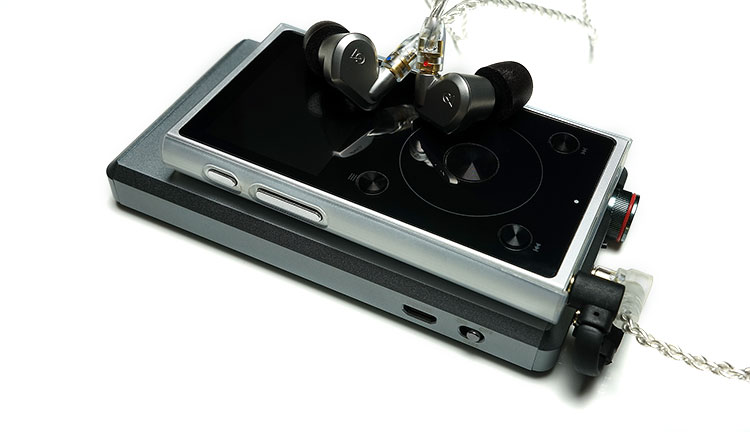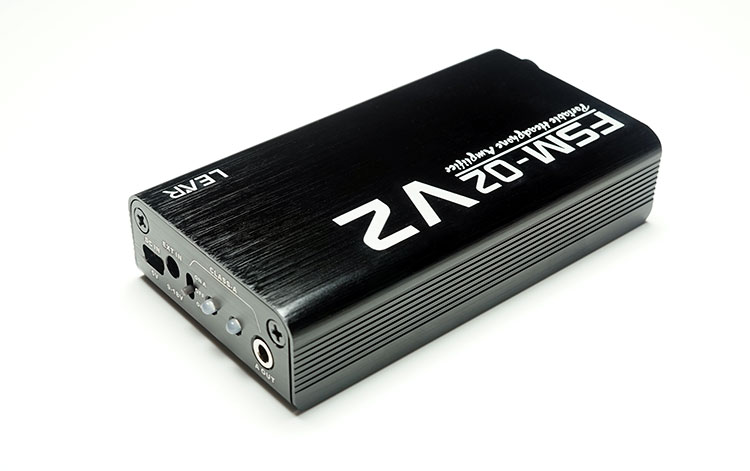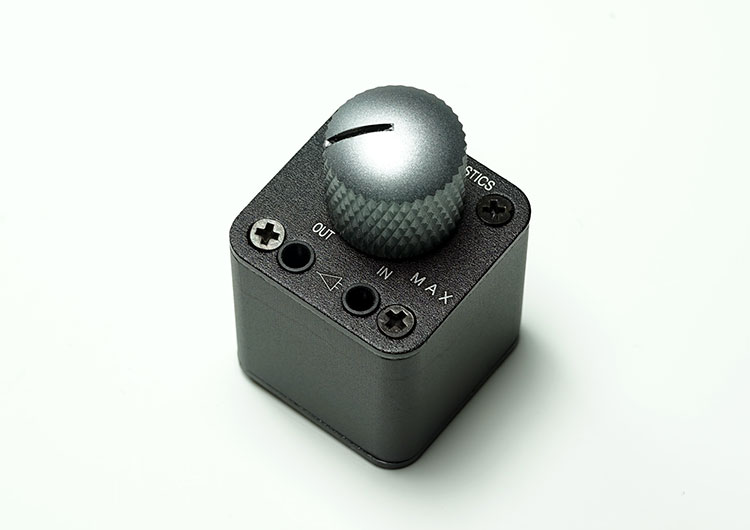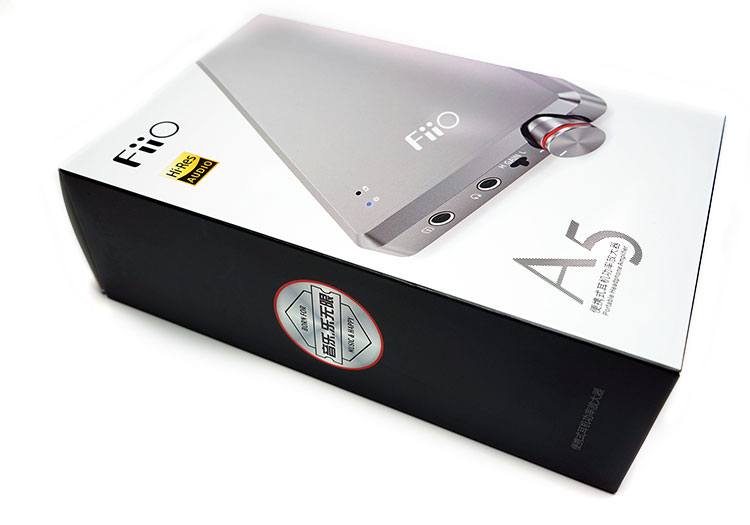Matchability
IEMs
The main difficulty with IEM pairings with the A5 is the low gain aggression. You will find relatively good noise floors with most, even sensitive IEMs such as the Andromeda fair very well in terms of background hiss. However, channel imbalance and z very small useable volume control will be the flavor of the day so tread carefully. The A5 is clean, very low noise but that additional power almost puts this amp back into mildly inefficient headphone territory if you want plenty of volume and gain control.
Campfire Andromeda
Efficiency
Low noise floor in low gain, hiss in high gain
Still audible signal and left channel imbalance with volume pot at zero. Audible does a minor switch to right channel bias before balancing out at around 11 pm (note starting position is 10 am on the dial). Low gain is quite aggressive for this highly efficient BA design with it maxing out super quick at 1130am on the dial which is just half a click beyond the channels balancing.
Tonality
Tonally the A5/Andromeda pairing is neutral to a dark presentation but with a substantial low-end body over and beyond the likes of the PB3 which is warmer across the board and more open sounding in the mids but with a flatter low end. Treble is well controlled without sounding overly forward or airy, more neutral in positioning along with an equally neutral mid-section and excellent vocal performance.
Soranik Sk1
Efficiency
This is slightly less efficient at 20-ohm 109dB single BA design but there is a very minute level of audible signal at zero volume so not a completely black background. Once again it starts with a slight left channel imbalanced before swinging over to the right between 10 and 11 am on the dial.
You get a settled channel balance at 11 am on low gain but in terms of comfortable listening in low gain the highest I could get it was 12 noon so it’s still a bit aggressive. Similar results in high gain for channel imbalanced and audible signal and a slighter of hiss but nothing as obvious as the Andromeda and you can get volume and balance at 11 am on high gain should you wish to use it.
Tonality
This pairing is best heard without any bass boost which muddies the low range and bleeds right into the SK1’s excellent mids performance almost killing it for me.
Without the boost, this is a smooth mid-centric pairing with a very coherent low end and laid back top end. The A5’s already smooth top end might not be what treble heads are looking for and it won’t bring out any hidden sparkle in the SK1. Instead, it adds a nice bit of low-end weight, adds a bit of spaciousness to the midrange and allows vocals to breathe nicely. If there was more play in the volume this would be a very relaxing pairing.
iBasso IT03
Efficiency
The IT03 is an 8 ohm 107db rated hybrid IEM selling for $259. It does require a bit more juice than regular BA designs to sound optimal. Once again though there is an audible noise floor at ground zero with the IT03 and A5 pairing but skips the left channel bias and goes straight to right channel imbalance before settling on a proper balance around 11 am on low gain.
It is hiss free though in both low and high gain but the high gain isn’t terribly useable. That being said it’s still quite aggressive on low gain with top volume a few mm lower than noon on the pot.
Tonality
This is a lovely match. This one really nails it for me and anyone with an IT03 should strongly consider pairing this with the A5. An impactful bass response, smooth but neutral mids and a very nice top end that is high on sparkle and extension with very good headroom and very little in the way of peakiness which is one of the issues I have with the It03 in unbalanced mode with some other sources and amps.
It doesn’t quite have the smoothness in the vocal performance of the higher end IEMS with a tiny bit more sibilance than the SK1 or Andromeda but otherwise, it is a very enjoyable musical experience.
Headphones
Headphones faired much better on the A5 in both low and high gain and at times the option of using the bass boost for certain headphones such as the HE400s didn’t seem as far-fetched as it were with the IEMs.
Efficient headphones at 32 ohms or less did have much less pot play for volume control, even in low gain mode and it is only when you start hitting the less efficient planars in the market could you push the volume dial over 1pm in the pot showing that indeed the A5 has plenty of gain and decent power. I do wish though the low gain was much lower and provided more of a distinction between it and high gain. Sensitive IEMs and headphones would have really benefitted from that differentiation.
Samson Z55
Efficiency
The Samson Z55 is a $199 32 ohm 98db rated on-ear portable studio headphones with a balanced tonal presentation. On the A5 there is no audible signal in either low or high gain, zero noise and a very good level of channel balance on the A5 pot. Low gain is still a touch aggressive for the Z5 with comfortable listening levels just before 1 pm on the A5 pot and around 11 am in high gain.
Tonality
This pairing, as expected, will give you a fairly solid balance across the FR with a touch more sub-bass reach and low-end body but not too much, a mid-centric slightly euphonic focus with excellent vocals and more than acceptable dynamic and resolution.
You will not get a huge amount of headroom with this pairing with neither the Z55 or the A5 world-beaters in top-end extension and airiness. However, what you do get has decent sparkle and articulation rather than laid back or smoothed out.
Hifiman HE400s
Efficiency
The HE400s is the first headphone (planar) that in any way felt more comfortable with the A5 in low or high gain in terms of volume control. It is still not super high at around 130pm on the pot but channel imbalance was well controlled, hiss was nonexistent and noise floor was low so on other points, it did very well indeed. High gain just dropped to about noon on the pot but still low noise floor and no hiss.
Tonality
Without the bass boost, the HE400s can come across as entirely mid-centric with decent but not overwhelming extension in either direction. The excellent low-end body of the A5 doesn’t quite have the same impact as it can on more efficient headphones so the odd time, on EDM mainly, I threw on the bass boost. It bleeds a touch into the mids, warming them up but the flip side I got a bit more weight and physicality with the HE400s low end.
Without the bass boost, it sounds a little leaner compared to a solid desktop using neutral sources such as the D200 and a little bit more impactful without bass boost using warmer musical sources such as the X5iii.
It is entirely a mood thing as I am not a fan of the A5 bass boost and it only really has some relevancy with headphones such as this for certain tracks. Just another mention, a bass boost in high gain is far too overpowering, even with the HE400s.
Oppo PM-3
Efficiency
Zero noise on either gain switches with only the tiniest of an audible signal on zero volume in high gain. Both gain switches have right channel bias with the PM3 at very low levels but balances out evenly fairly quickly. The A5 is still a bit aggressive with the PM3 in low gain topping out at similar levels to the H400s so there is some useable volume but not a huge amount and slightly less so in high gain.
Tonality
Given the rather neutral but thick note of the PM3, it is not advisable to use the bass boost with this pairing. It simply comes off as too boomy and bleeds into the mids clouding any articulation from the top end.
Keeping the bass boost off you get a cleaner response, a good balance and decent low-end body though not earth shattering. If you want to increase the musicality of the pairing opt for a source such as the X5iii over the DX200 but it will cost you a little in dynamics.
Select Comparisons
iBasso PB3
$199
Efficiency & Functionality
Truth be told despite the $199 price point the A5 is a very competitive when set beside the PB3 and if it not for the balanced output of the iBasso you could put up a really good reason for not getting iBasso’s balanced amp. It is $70 cheaper for a start, packs in a pretty good MUSES02 opamp and excellent power ratings at 800mW into 30 ohms make it ideal for headphones.
However, some numbers to think about with the PB3. The PB3 has a -120dB SNR rating compared to the A5 which comes in at -115dB as well as 20-hour battery life compared to the A5 at just 13 hours. Also, iBasso is a lot more confident with their THD numbers offering on paper <0.0005% THD compared to FiiO’s A5 THD+N paper rating at <0.002%.
Tonality
Tonally, and in an unbalanced mode the A5 offers warm to neutral and fairly smooth presentation but with a bit more low-end grunt and slam than the PB3 whereas the PB3 is slightly flatter but more open sounding with a sweeter midrange.
Going balanced will tip the scale in favor of the PB3 with a tighter more dynamic presentation. If there is sibilance in the source tracks both will pick it up but the PB3 just smoothes it out marginally over the A5. The A5 has a touch more treble sparkle but not by much.
If you want a bit more low-end weight, get the A5. If you want a slightly warmer and smoother more balanced sound, then the PB5 is the better option.
Lear FSM-02 v2
$260
Efficiency & Functionality
You get two amps for the price of one and a host of gain and hardware EQ options with the FSM-02 V2. However, if the A5 is a little too aggressive with sensitive IEMs on low gain the Lear is even more aggressive as such I wouldn’t factor the FSM-02 V2 into any purchasing decision if I am plugging in IEMs with high sensitivity and low ohm ratings.
You will get little to no wiggle room for volume control, some popping noises, channel imbalance and in the very nice Class A output you will get a higher noise floor and background hiss. This is primarily a headphone amp or a high resistance low-efficiency IEM or earbud amp. SNR on the Lear is not quite as good as the -115dB of the A5 at 100dB but THD numbers seem to be lower at <0.00001%@ 1kHz compared to 0.002% of the A5.
SNR on the Lear is not quite as good as the -115dB of the A5 at 100dB but THD numbers seem to be lower at <0.00001%@ 1kHz compared to 0.002% of the A5. Battery life is less than the A5 also at 10 hours using the normal amping output and a diminutive 4 hours using the Class A amping option compared to the 13 hours of the A5.
Tonality
Tonally the Lear is more neutral sounding using its normal amp output with a cleaner presentation and more sparkle in the top end than the A5. It has a more energetic presentation overall. The Lear does have a slightly brittle nature in its lower treble compared to the A5’s smoother response. At this point, the normal amp of the Lear and the A5 offer competitive options and the additional money spent on the Lear might not seem wise until you try the Class A output of the Lear.
The Class A output is more dynamic, smoother, rich and thicker tonal presentation than the A5. I am not surprised. You may only get 4-5 hours but it is a glorious sounding 4 hours like being plugged into a portable tube amp of some quality. EQ bass boosting is a touch more subtle on the Lear and not quite as bloated as the A5 but it is not ideal and I never gelled with either for bass boosting except on one or two headphones such as the K812 and oBravo ERIB-5a planar IEM.
Stoner Acoustics Ruby
$99
Efficiency
The adorable little Ruby is a head turner, even if the A5 is the sleeker and better-made product. Something of that size will always be a talking point regardless of specs. That being said the specs are not on par with the A5, at least on paper with a 2.3 0hm output impedance compared to the A5 0.3-ohm rating, and a rather tiny 40mW max output compared to the A5 meaty 800mW max output power.
IEMs
Despite the high impedance factor, the Ruby performs remarkably well with sensitive IEMs such as the SE846 and the CA Jupiter and Andromeda with zero channel imbalance from its impeccable stepped attenuator, a black background, and zero background hiss. You also get about 5-6 notches on the attenuator over the next to no wiggle room on the A5 in low gain for IEMs. On these points, the Ruby is the equal of the A5 if not better for IEMs.
Headphones
The A5 though pulls away with headphone use. once paired with planars or less efficient 32 ohm upwards headphones the Ruby starts to fade with a loss of detail and dynamics sounding a bit tinny compared to the fuller and more confident sounding A5.
Tonality
Tonally the Ruby has a warm to neutral presentation with a full sounding and forward mid bass and decent punch but lacking in any huge sub-bass extension and doesn’t have the same body that the A5 can kick out in the low end. Detail and resolution are pretty decent but it is not an overly analytical signature erring more to a musical quality than anything sterile or flat.
Lower mids are relatively beefy also and in line with the mid-bass response. The A5 is a bit more neutral sounding to my ears with better resolution and stronger vocal performances than the Ruby can muster. Neither have airy signatures but the A5 just seems to convey a better sense of space and layering.
Our Verdict
Who is it for?
The appeal of the FiiO A5 will largely depend on what type of earphone or headphone user you are. If you are a headphone guy and miss the raw power of the E12 but needed something more refined, smoother and with lower noise then the A5 is a quality upgrade. For the E12a user the debate is more complex and buying the A5 or side grading has a lot more variables to consider not least the more aggressive low gain of the A5 making use of sensitive IEMs a challenge than perhaps it needed to be.
I will say though that the A5 is refined, musical sounding, with a very planted and warmish low end with good impact. It is fairly transparent, clean and neutral mids and good treble extension though not that airy but with more headroom than the E12a.
Caveat
I would temper all the good stuff about the A5 that with a caveat on the bass boost. It’s a little unevolved, too wide in its range and kills the clarity of an otherwise enjoyable presentation. Leave your sweaty paws off the boost and you will do just fine. I would actually have preferred to have seen a variable gain switch than a bass boost with a much lower “low gain” starting point just to maximize the potential pairing with IEMs.
Competitive
I am particularly glad though the A5 is now just $129.99. That seems top value to me and in particular for headphone users who want amplification on a budget. Of late FiiO have been edging upwards, not much but slight and this drop in price from the E12a is a welcome return to sensibility for me. At this price, it should be on everyone’s demo list for a worthwhile initial upgrade in amping on the go.
A5 Technical Specifications
| Model Name/Number | A5(FA5121) | Color Available | Titanium / Black |
| Weight | 168 g (incl. battery) | Dimensions | 124 mm×65.5 mm×14.5 mm |
| Audio Input | 3.5 mm stereo jack | Headphone Output | 3.5 mm stereo jack |
| Volume Control | ALPS Potentiometer | Bass Boost | 1 Level |
| Drive Ability | 16~300 Ω (recommend) | Power Input | recommend DC5V 2A |
| Battery Capacity | 880 mAh | Battery Life | ≥13 h |
| Output Power | >800 mW (32 Ω/THD<1%) ≥ 150mW(300Ω/THD<1%) |
Charging Time | <3 h(DC5V 2A) |
| THD+N | <0.002% (1 kHz) | Output Impedance | <0.3 Ω |
| Frequency Response | 10 Hz~90 kHz(-3dB,Input: 220mV) | SNR | ≥115dB (A-weighted) |
| Input Sensitivity | 5.6 V (GAIN=L)
1.15V (GAIN=H) |
MAX Input Level | >8 Vrms |
| Crosstalk | ≥ 75 dB | Channel Imbalance | <0.3 dB |
| Gain | 13 dB (GAIN=H)
0 dB (GAIN=L) |
Bass Boost Range | >5 dB (BASS ON) |
| Peak Output Voltage | 14.96 Vp-p | MAX Output Current | 250 mA(For reference) |







